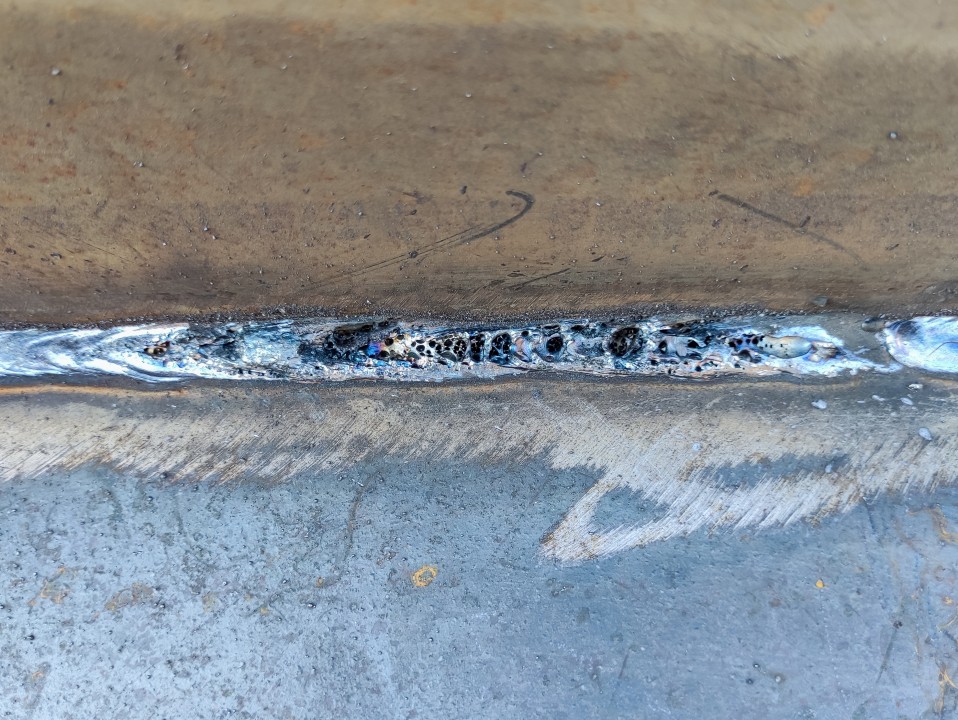Comprehensive Guide: What is Porosity in Welding and How to Prevent It
Comprehensive Guide: What is Porosity in Welding and How to Prevent It
Blog Article
Comprehending Porosity in Welding: Exploring Reasons, Impacts, and Avoidance Strategies
Porosity in welding is a consistent challenge that can significantly affect the quality and stability of welds. As professionals in the welding sector are aware, understanding the reasons, effects, and avoidance strategies associated with porosity is vital for accomplishing durable and dependable welds. By diving into the origin of porosity, analyzing its detrimental impacts on weld quality, and checking out effective prevention approaches, welders can improve their understanding and abilities to produce top notch welds consistently. The complex interplay of variables adding to porosity needs a comprehensive understanding and a positive technique to guarantee successful welding results.
Common Root Causes Of Porosity
Contamination, in the form of dirt, oil, or rust on the welding surface, produces gas pockets when warmed, leading to porosity in the weld. Incorrect securing happens when the protecting gas, generally utilized in procedures like MIG and TIG welding, is unable to completely shield the liquified weld swimming pool from reacting with the surrounding air, resulting in gas entrapment and succeeding porosity. In addition, insufficient gas insurance coverage, typically due to wrong flow rates or nozzle positioning, can leave components of the weld unprotected, enabling porosity to create.
Effects on Weld High Quality
The visibility of porosity in a weld can dramatically endanger the total top quality and honesty of the welded joint. Porosity within a weld develops gaps or dental caries that deteriorate the framework, making it much more vulnerable to splitting, corrosion, and mechanical failing.
Furthermore, porosity can hinder the performance of non-destructive screening (NDT) techniques, making it challenging to detect various other issues or discontinuities within the weld. This can cause significant safety worries, particularly in essential applications where the structural stability of the bonded parts is paramount.

Prevention Techniques Overview
Given the harmful effect of porosity on weld high quality, efficient avoidance strategies are essential to maintaining the architectural integrity of welded joints. Additionally, selecting the suitable welding parameters, such as voltage, existing, and take a trip rate, can aid reduce the danger of porosity formation. By including these avoidance techniques into welding practices, the incident of porosity can be significantly decreased, leading to stronger and a lot more trusted bonded joints.
Importance of Correct Protecting
Appropriate protecting in welding plays an essential duty in stopping atmospheric contamination and making certain the honesty of bonded joints. Securing gases, such as argon, helium, or a blend of both, are typically utilized to safeguard the weld pool from reacting with elements airborne like oxygen and nitrogen. When these responsive components come into call with the warm weld pool, they can cause porosity, resulting in weak welds with lowered mechanical residential or commercial properties.

Inadequate protecting can result in different defects like porosity, spatter, and oxidation, endangering the structural integrity of the bonded joint. For that reason, sticking to proper protecting techniques from this source is vital to create top quality welds with marginal defects and make sure the longevity and dependability of the welded elements (What is Porosity).
Monitoring and Control Methods
Exactly how can welders properly monitor and manage the welding procedure to make certain optimal results and stop issues like porosity? One trick method is through the use of advanced tracking technologies. These can consist of real-time monitoring systems that give feedback on criteria such as voltage, existing, travel speed, and gas flow rates. By constantly keeping an eye on these variables, welders can determine variances from the ideal conditions and make immediate adjustments to stop porosity development.

Additionally, why not check here applying proper training programs for welders is vital for keeping track of and controlling the welding procedure properly. What is Porosity. Informing welders on the importance of maintaining regular specifications, such as appropriate gas shielding and take a trip speed, can assist avoid porosity issues. Normal evaluations and certifications can additionally make sure that welders are skillful in surveillance and managing welding processes
Moreover, using automated welding systems can enhance tracking and control capacities. These systems can exactly regulate welding specifications, decreasing the chance of human Click This Link error and making certain constant weld top quality. By incorporating advanced surveillance innovations, training programs, and automated systems, welders can properly keep an eye on and manage the welding procedure to reduce porosity issues and achieve high-quality welds.
Final Thought

Report this page